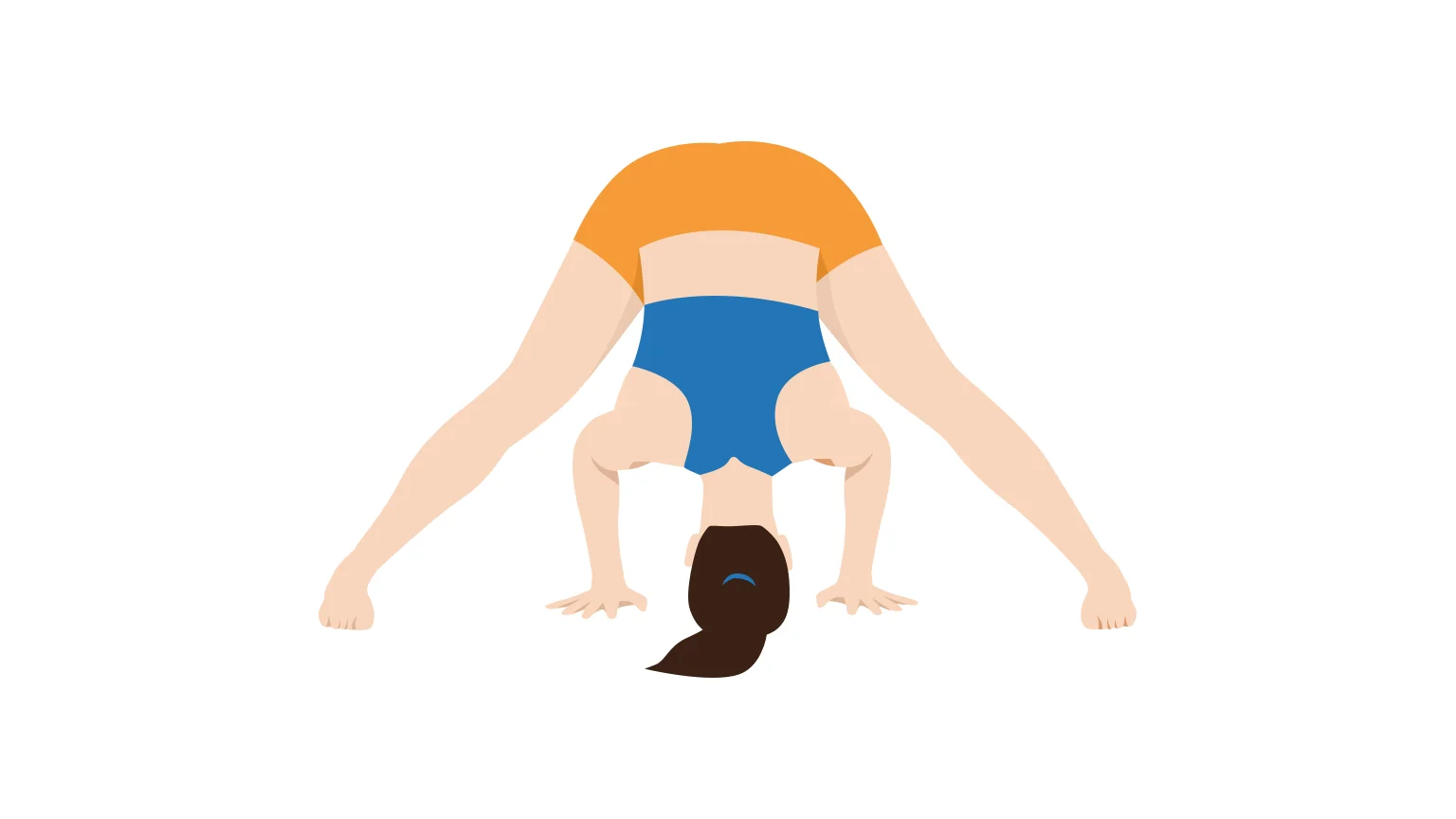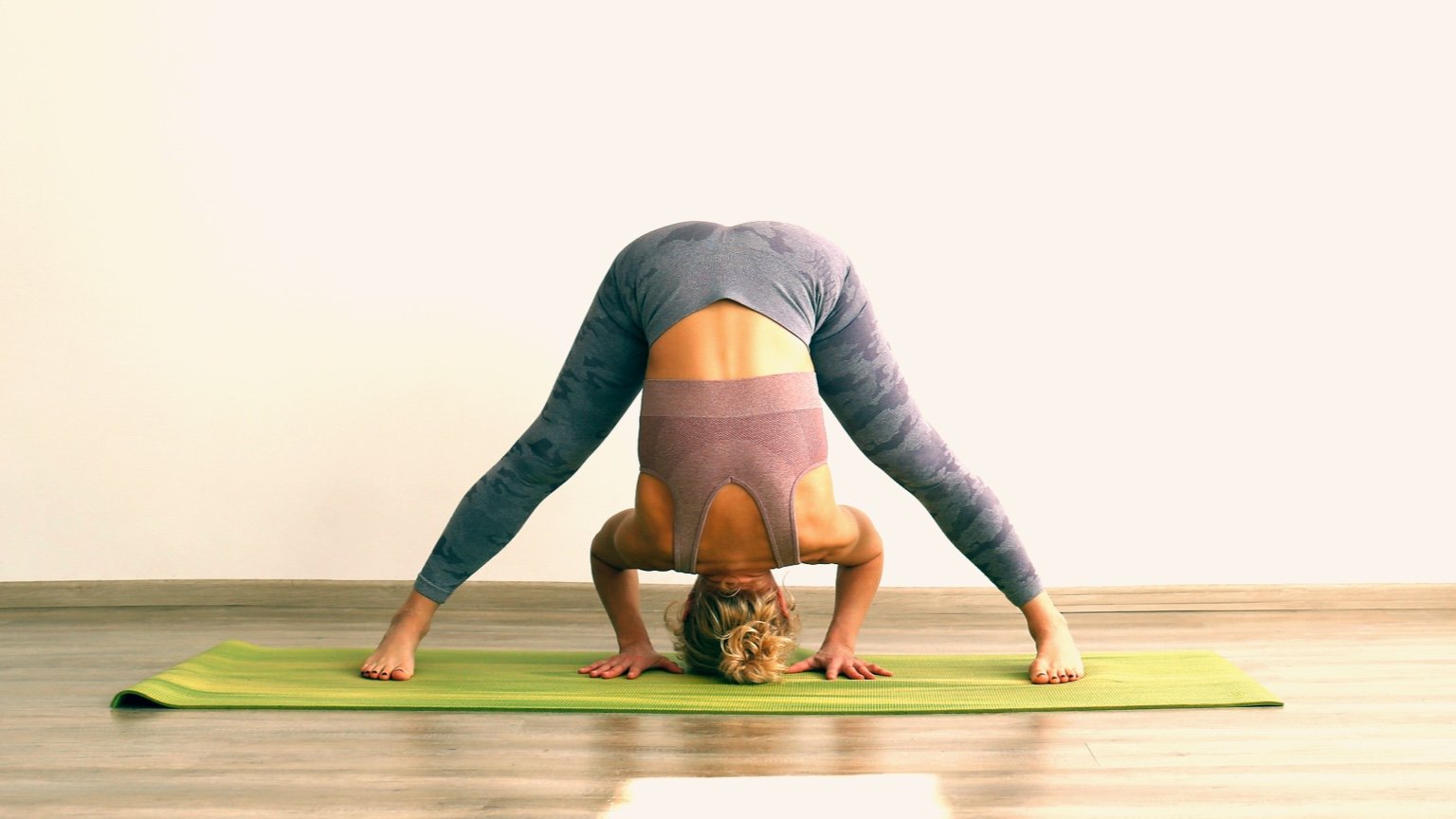Wide Legged Forward Bend (Prasarita Padottanasana)

The Wide Legged Forward Bend, also known as Prasarita Padottanasana, is a standing yoga pose. In this pose, the yogi spreads their legs wide apart on the mat while bending forwards from the hip. They hang their torso towards the ground, with their hands resting on the floor beneath their shoulders.
- Position: Standing.
- Stretched body parts: Hamstrings, quads, glutes, inner thighs, neck. The core muscles are also engaged to support your upper body during the forward bend.
- Benefits: It is said the inverted positioning may help headaches, although evidence for this is anecdotal. Because of the forward bend, it may stimulate blood flow to the abdominal organs (as well as increased mobility) which can help with digestion.
- Similar poses: Downward Facing Dog (Adho Mukha Svanasana), Standing Forward Bend (Uttanasana), and Pyramid Pose (Parsvottanasana)
Meaning of Prasarita Padottanasana
The name “Prasarita Padottanasana” can be broken down into several parts. “Prasarita” means “to spread out” or “to expand”. The next part of the name is more complicated. “Pada” means “foot”, “Ut” means intense, “Tan” means “to stretch” and “Asana” means “pose”. These together form the final part of the word “Padottanasana“, which translates literally to “Intense stretch with feet spread wide pose”.
How to do the Wide Legged Forward Bend

- First take position in the Mountain Pose – stand upright on your mat with your feet hip-width apart.
- Step your feet apart so they are distanced around 3 or 4 feet apart from each other (this depends on your height). Keep your feet parallel with your toes pointing forwards.
- Extend your arms forwards so they are parallel with the ground. Keep your palms facing downwards.
- Take a deep breath then, exhaling, fold forward by hinging at your hips. Throughout the movement, keep your back and neck straight.
- Bring your hands to the floor and press your torso towards your legs.
- Hold this pose for 5-10 breaths.
- Finally, to exit the pose, inhale and lift your torso back up to a standing position.
Variations
- For extra support: Use a yoga block under your hands if you cannot reach the floor.
- Easier pose: If you have difficultly bending all the way forwards in this pose, you can slightly bend your knees and avoid pressing your torso further in.
- More challenging: Try extending your hands outwards to touch your big toes, or hold onto your ankles. This variation will demand more stability and control to avoid falling forwards.
- Clasped hands: As you bend forward, keep your arms behind your back with your hands clasped.
Tips
- Be careful to not overstretch. Only press your torso in towards your legs as far as is comfortable for you.
- Keep your spine and neck straight and aligned during the pose.
- Try using different distances between your legs and find which distance is most comfortable for you.
Prep poses
- Mountain Pose (Tadasana) – The mountain pose helps you establish proper alignment of your legs, spine and chest. It’s a great way to warm up for more complex yoga poses.
- Downward-Facing Dog (Adho Mukha Svanasana) – This pose stretches your hamstrings and shoulders, which will help during the Wide Legged Forward Bend.
- Triangle Pose (Trikonasana) – The Triangle Pose will stretch your legs, hips and the sides of your torso, preparing your muscles for a more complex pose.
